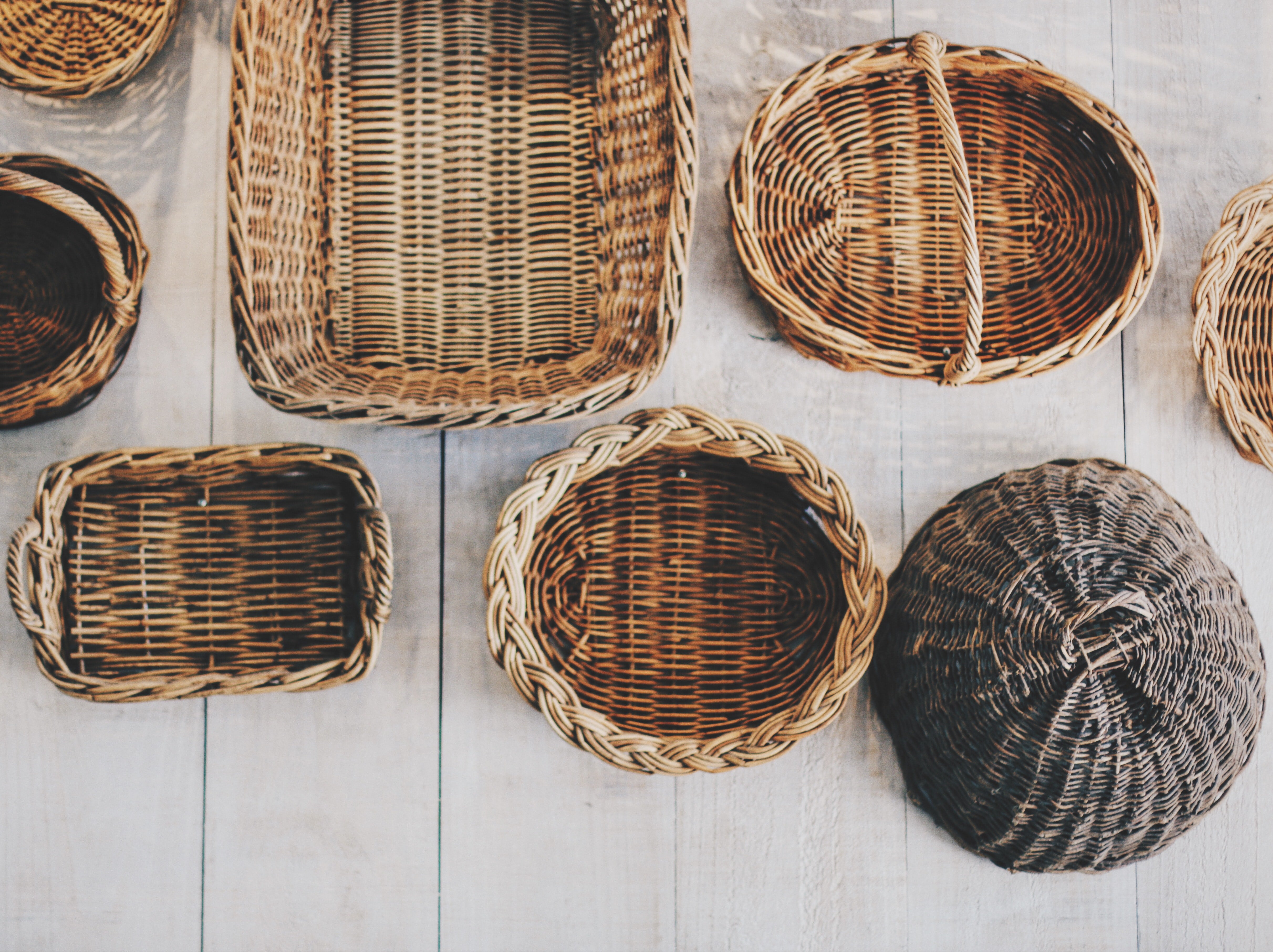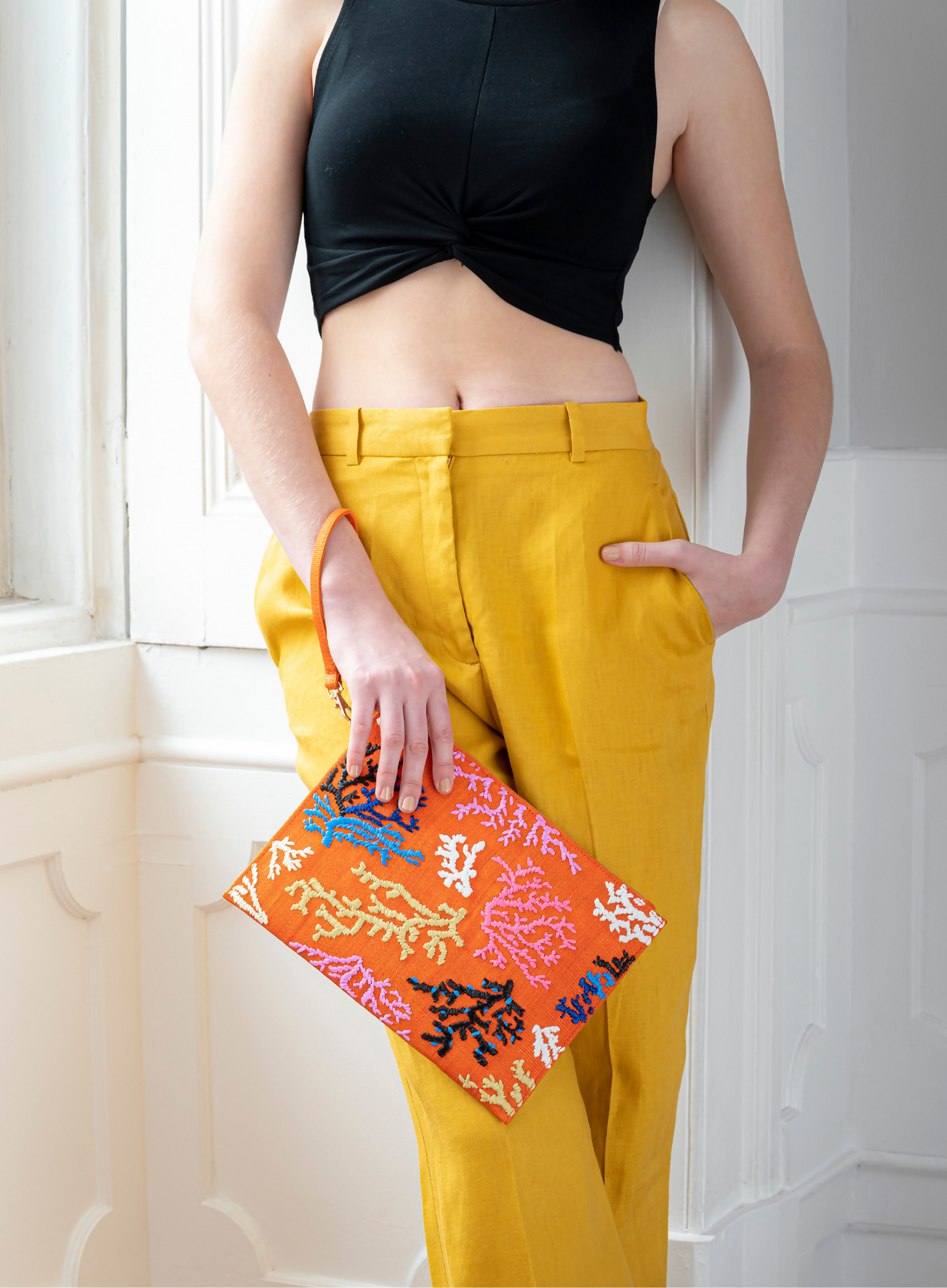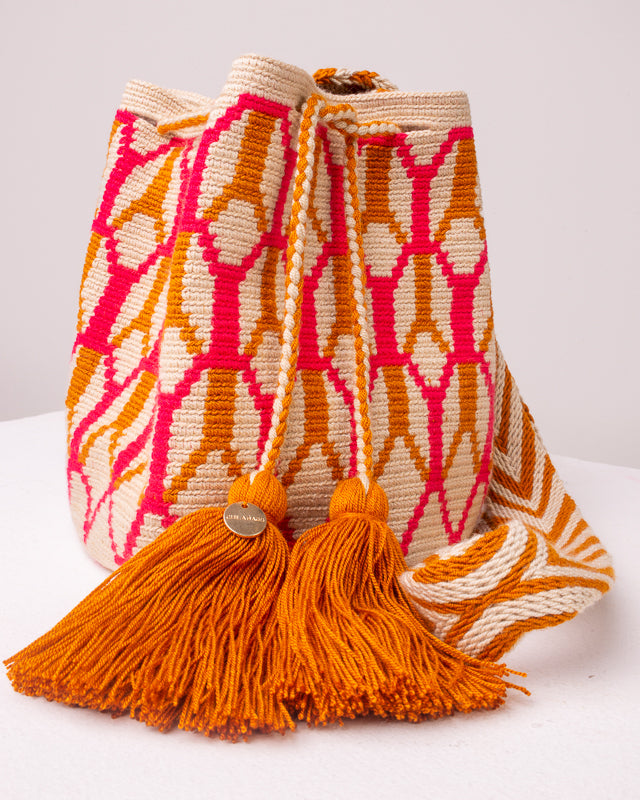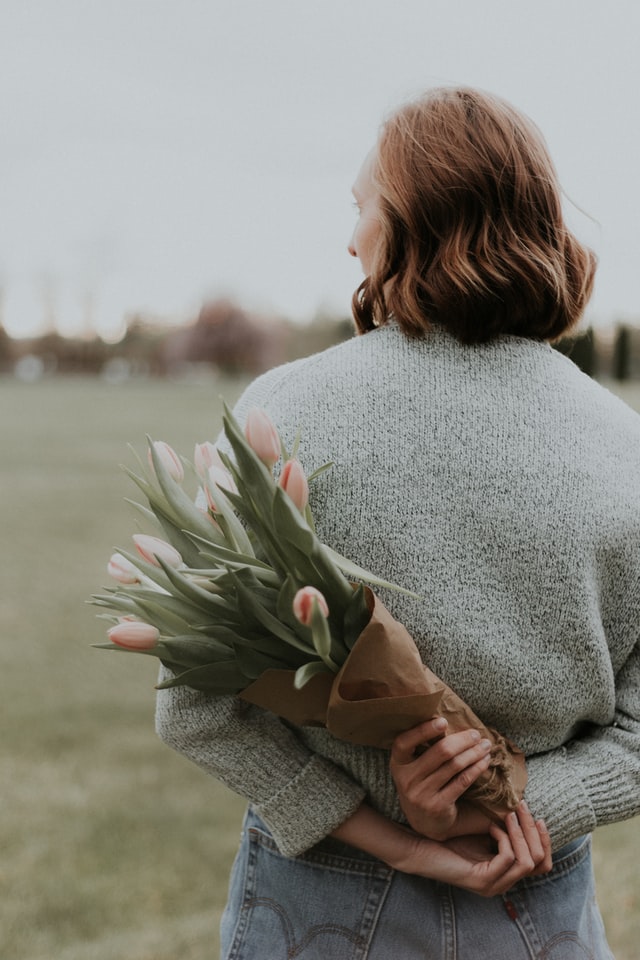
Woven into the Fabric of Time - A History of Wicker
Don’t get us wrong, we love a vintage wicker number. Generally, however, these bags were usually only suitable for Spring/Summer and styles and colours were limited.
It may surprise you to know, therefore, that wicker is undergoing something of a resurgence. Stronger, sleeker, and available in pretty pastels, wicker is making a comeback, as seen in our stunning Wicker Wings collection.
Before we introduce you to the new improved wicker bag, we’d like to give you a little bit of background, if we may?
Sit back, grab a mug or glass of your favourite beverage (no judgement here) and allow us to take you on a journey, as we explain everything you never knew you always wanted to know about this marvellously versatile way of weaving.

Photo by ZACHARY STAINES on Unsplash
What is Wicker Made From?
First things first, what is ‘wicker’ made out of? Well, given its common usage, you would be forgiven for thinking that wicker was a kind of material, but this is not the case. ‘Wicker’ actually refers to the technique of weaving any one of a variety of plants to create a material that can then be used for furniture and textiles. When woven correctly, a range of pliable plants, such as rattan, bamboo, willow, and reed can all be used to create natural wicker. Sometimes synthetic fabrics are now used to create wicker too, but we infinitely prefer going the natural route.
The name is thought to have originated from the Swedish words for ‘to bend’ - vika, and Willow, which is ‘vikker’, although just about every culture has a relationship with wicker going back millennia. More on that shortly.
Despite being so light and flexible, these plants create a strong framework when woven, making them ideal for all sorts of containers, textiles, and constructions.

A Brief History - Where Does Wicker Come From?
So, where did wicker originate? That’s actually a very difficult question to answer.
Due to the abundance of raw materials, such as bamboo and rattan, it is generally accepted that wicker has its roots in Southeast Asia and was later adopted by Europeans and Americans, with wicker furniture becoming popular in the west in the 1800s. But is that true?

Photo by Wicker Paradise on flickr
There are examples of wicker all over the world dating back thousands of years, from Ancient Egypt, to the Native Americans, the Sumerians, and across the Middle East. The tomb of King Tutankhamen contained a wicker chair seat and headboard. Stone carvings depicting basket weaving dating from 20,000 years BC have even been discovered.
Wicker also exists in many creation myths and legends, such as the a passage on the Babylonian god Marduk which describes the creation of the earth as “plaited a wicker hurdle on the surface of the waters. He created dust and spread it on the hurdle". For the Dogon of West Africa, the world system also began with weaving with an upended basket
Possibly, wicker was ‘discovered’ in different parts of the world almost simultaneously, and became almost ubiquitous as these secrets were spread.
For example, drying reeds via the hot Egyptian sun and moulding techniques used on wet reeds and rushes do not differ greatly from today’s methods. The Romans influenced civilization across the world and, when they took control of Egypt in 30 BC, they adopted wicker and brought it to Europe.
Interestingly, sources seem to indicate that wicker was not prevalent in China until the 15th Century. Still, if this is true, China more than made up for being late to the wicker party by bringing to prominence a smaller, thinner wicker, which was useful for bowls and storage boxes.
Wicker Around the World
Asia
From Vietnam to Indonesia, wicker weaving remains a way of life. While much of the industry is concerned with creating wicker furniture for exporting, predominantly female artisans continue to lovingly hand-weave baskets for a variety of uses. Using techniques taught to them by their mothers and grandmothers, these women earn a living wage by working with ethical companies such as Wicker Wings, who pay them fairly for their services and help to keep these traditions alive.
The Mediterranean
Similarly, in places such as Sardinia, Flussio, Ollolai, Sennori, and Montresta, the raw materials range from raffia and dwarf palm to rushes and grains. Here, too, the techniques are passed down through generations of women, who imbue the baskets with character and style using coloured inserts, shapes, and patterns.
Wicker Handbags
Despite centuries of wicker baskets, it wasn’t until the late 1950s/1960s that wicker really entered the fashion world, in the form of handbags. These bags or wicker purses tended to be small and very delicate and featured embellishments such as embroidery or applique. Post-war, fashion was feeling frivolous and novelty wicker bags featuring an array of cute animals and designs fit the bill perfectly.

Photo by Wicker Paradise on flickr
In the 1960s, these designs progressed into synthetic wicker bags, with materials such as PVC and other plastics forming a wicker weave fabric, allowing for more colour and styles, and making the bags themselves much more durable. You could buy a wicker animal purse or a large, hardwearing wicker tote to take you through the seasons.
Since then, wicker handbags have come and gone, pretty much every decade, particularly during spring/summer. However, they were never really seen as ‘high fashion’ after those 50s / 60s heydays. Until now.
Wicker for the Modern Woman

Photo - Wicker Wings Mini Kuai in Cream
In much the same way as post-war fashions were fun and frivolous, fashionistas are predicting that after months of loungewear, activewear we may or may not have been wearing ironically, or just actual pyjamas, the world’s emergence from lockdown and the worst of the Covid-19 pandemic will spark as fashion renaissance.
We’re all desperate to socialise, travel, and express our stifled creativity and personalities once more.
But we’re preparing to re-enter a world that has changed, and us along with it. Sorry to get philosophical in a fashion blog, don’t worry, it’s only a small detour!
We want to celebrate, but we also feel fragile. Many of our appearances have altered one way or another in lockdown and we aren’t feeling quite ourselves.
The beauty of bags is that, they retain their style and beauty even if the wearer doesn’t feel that she is looking her best.
If they are well-made, a good bag can last for generations, and a beautiful bag always looks beautiful. When you can’t fit into your favourite dress, or the buttons won’t do up on your skinny jeans, your special bag will still be there to lift any outfit.

Photo - Wicker Wings Lian in Dusk
The Latest Wicker Bag
Wicker Wings are not the wicker bags of old. They’re a modern take on a classic, with sleek lines, sophisticated sugared almond shades and, perhaps most importantly, these wicker bags are suitable for any season.
Even better, Wicker Wings bags are made from natural, sustainably-sourced materials, grown in the Philippines and woven in Indonesia. Even the leather used to finish the bags is vegetable-tanned in the most environmentally-friendly way possible.
Not to mention the fact that when you purchase a Wicker Wings bag from Sophie Summer, you are helping to sustain female artisans and keeping generations-old traditions alive.
So, you can browse our stunning collection of wicker ‘arm-candy’ handbags without feeling the slightest bit guilty, even if browsing should turn to buying...
Enjoy!
DISCOVER THE WHOLE SOPHIE SUMMER COLLECTION



1 comment
Hello, do you offer any assistance/guidance on determine age of wicker pieces? I have a basket that I cannot find similar examples of and looking for resources have not been very fruitful!
Liberty Michel
Leave a comment
This site is protected by hCaptcha and the hCaptcha Privacy Policy and Terms of Service apply.